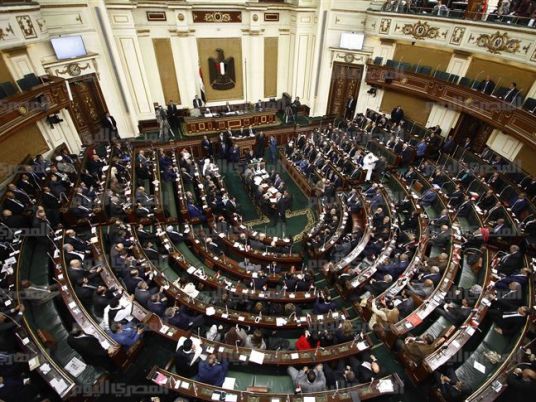
Coptic Christians have had a historical role in the Egyptian Parliament since it was first formed by Khedive Ismail. There were periods where they ascended the political ladder and left their mark on the history of modern Egypt, and other periods where they were not present in the political arena.
Today’s Constitution gives Copts a chance to return to the political arena within a quota, which some welcomed and others considered contradictory to the principle of equal citizenship.
Will the Copts accept this or will they decline to participate in Parliament?
Coptic candidates to run individually
Coptic candidates are expected to run for 24 seats on an individual basis in the upcoming parliamentary elections, concentrating on constituencies with a Coptic population density.

Inside parliament
The largest number of Copts appointed in parliament was under President Anwar Sadat
In the 1926 Parliament 23 Copts were elected and in the 1942 Parliament 27 were elected. Under President Gamal Abdel Nasser, Copts were reluctant to participate, which prompted him to introduce the quota system that allowed him as president to appoint 10 out of the 360 MPs in order to fill the gap created by their reluctance. Still, the 1957 Parliament did not have any Coptic representation.
The largest number of Copts appointed in parliament was under Sadat, with 10 members within the quota, while there were nine appointed and elected under Mubarak, and seven elected under the Muslim Brotherhood in the 2012 Parliament.

President Anwar Sadat
Copts 38, the Nour Party’s fig leaf
The Salafi Nour Party had to field Coptic candidates in its lists for Cairo and Alexandria to be in accordance with the Constitution, which stipulates that a list of a large constituency should include nine Coptic candidates and a list of a small constituency should include three Coptic candidates.
Although it is a party with a religious preference whose leaders once said that Copts should pay tribute, it did contact the Copts 38 activist group, which agreed to join its list. The party has 100 Coptic members of whom 40 are founding members.

Copts 38 coordinator Nader al-Serafy
Prominent Coptic figures in Parliament
Following the 1919 revolution, Copts played an important national role. Wissa Wassef Pasha was parliament speaker from March 20, 1928 to July 18, 1928 and from January 11, 1930 to October 21, 1930.
Makram Ebeid Pasha also had a prominent parliamentary role. It was he who first formed trade unions in Egypt. He always won the Qena constituency, which has a majority Muslim population.
Fakhry Abdel Nour, one of the most famous leaders of the 1919 revolution, was also a prominent Coptic member of parliament for the Gerga constituency.
Sinnott Pasha Hanna was among five leaders of the 1919 revolution who were exiled by the British to the Seychelles. He was elected as a member of the Egyptian Parliament in 1924.
Farag Ibrahim Pasha was a member of parliament who played a role in abolishing the 1936 treaty with the British.
Stefan Basile was a member of parliament who submitted a bill to ban the publication of any news about the royal family without permission. He had to withdraw the bill when political parties turned against him.
After the 1919 revolution, Tawfiq Pasha Andrew was a member of parliament for three times in Luxor.
Other prominent figures include Youssef Boutros-Ghali, the former Finance Minister, Georgette Qilliny, an appointed member of parliament in 2005, and businessman Rami Lakah.

Mounir Fakhry Abdel Nour
After the January 25 and June 30 revolutions, the Egyptian Constitution guaranteed a fair representation of Copts in parliament with 24 seats.
Coptic candidates in the upcoming elections accoutn for 20 percent of the four electoral lists, apart from the individual runners.
Edited translation from Al-Masry Al-Youm




